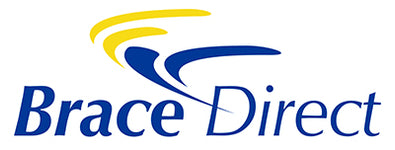
Rotator Cuff Injuries: Braces & Recovery
Your rotator cuff is a set of tendons and muscles that anchor the shoulder joint and allow overhead motion. When these tissues become torn, strained, or inflamed, everyday tasks can become painful. At Brace Direct, we provide specialized braces to minimize shoulder stress, reduce pain, and support faster healing.
Common Rotator Cuff Issues & Causes
Rotator cuff injuries develop gradually or suddenly from various factors. Typical examples include:
- Tendon Tears: Partial or complete tears caused by repetitive motion or acute trauma, limiting arm mobility.
- Impingement & Bursitis: Tight space in the shoulder can pinch tendons, leading to inflammation and pain.
- Overuse Strains: Repeated overhead activities in sports or work can weaken the cuff’s tendons over time.
- Degenerative Changes: Age-related wear on tendons can bring on stiffness, fraying, and chronic discomfort.
- Post-Surgery Recovery: After rotator cuff repair, bracing helps safeguard repaired tissue and ease pain.
How a Brace Aids Rotator Cuff Healing
Shoulder braces protect the rotator cuff and enhance recovery by:
- Limiting Painful Motion: Reducing shoulder movement prevents re-injury of strained or torn tendons.
- Supporting Weakened Muscles: Braces bear some of the arm’s weight, allowing tendons to rest and recover.
- Protecting Post-Operative Repairs: Braces restrict sudden motions that could harm freshly sutured tissues.
- Controlling Inflammation: Some braces incorporate hot/cold therapy, soothing irritated muscles and tendons.
By keeping the shoulder in safe alignment, braces encourage better healing and relieve daily pain.
Top Braces for Rotator Cuff Injuries

Brace Align Foam Arm Sling
Lightweight immobilizer perfect for mild tears, strains, or post-surgery shoulder stabilization, preventing excess movement.
Shop Now
Brace Align Deluxe Shoulder Abduction Brace
Adjustable abduction angles relieve tension on the cuff, aiding tendon recovery and shielding post-op repairs.
Shop Now
Brace Direct Frozen Heat Therapy Unit
Delivers hot and cold therapy to minimize swelling and discomfort around the rotator cuff, promoting faster relief.
Shop NowRestore Shoulder Strength & Mobility
A rotator cuff injury doesn’t have to halt your daily routine. Our braces are designed to stabilize the joint, decrease pain, and encourage a healthier range of motion. Explore our Perfect Fit Promise or browse our entire rotator cuff lineup below for personalized solutions.
Shop Rotator Cuff Braces








